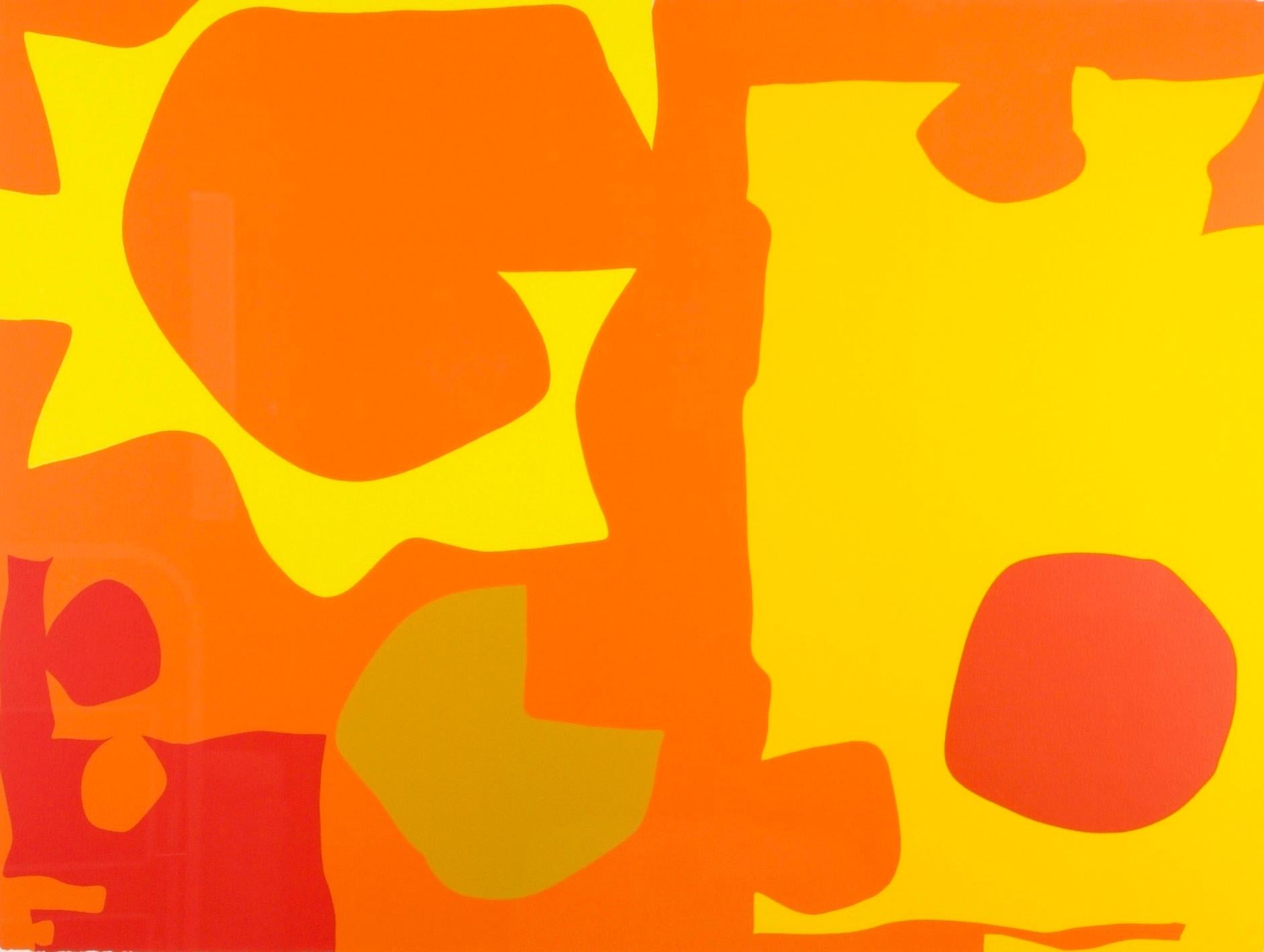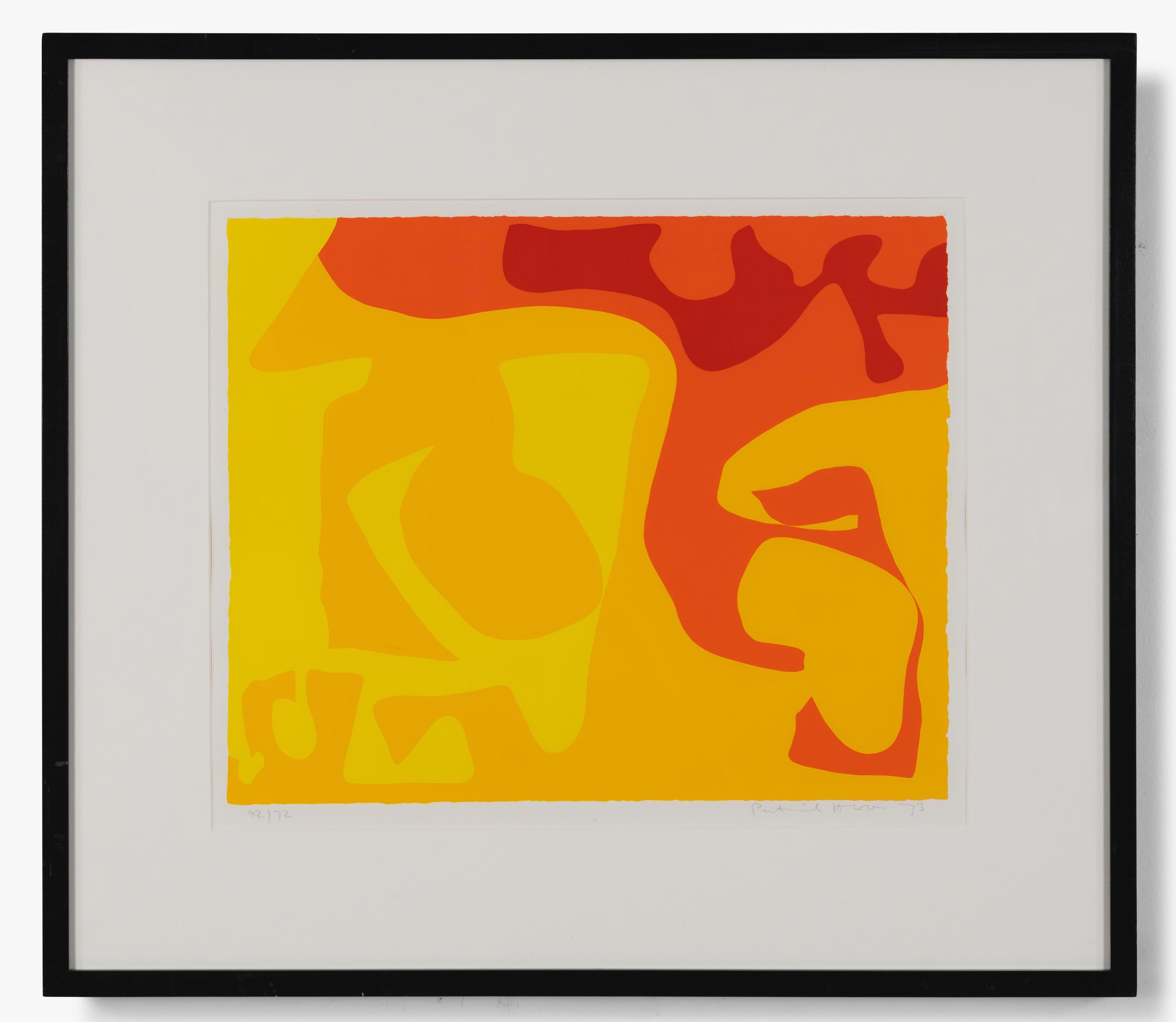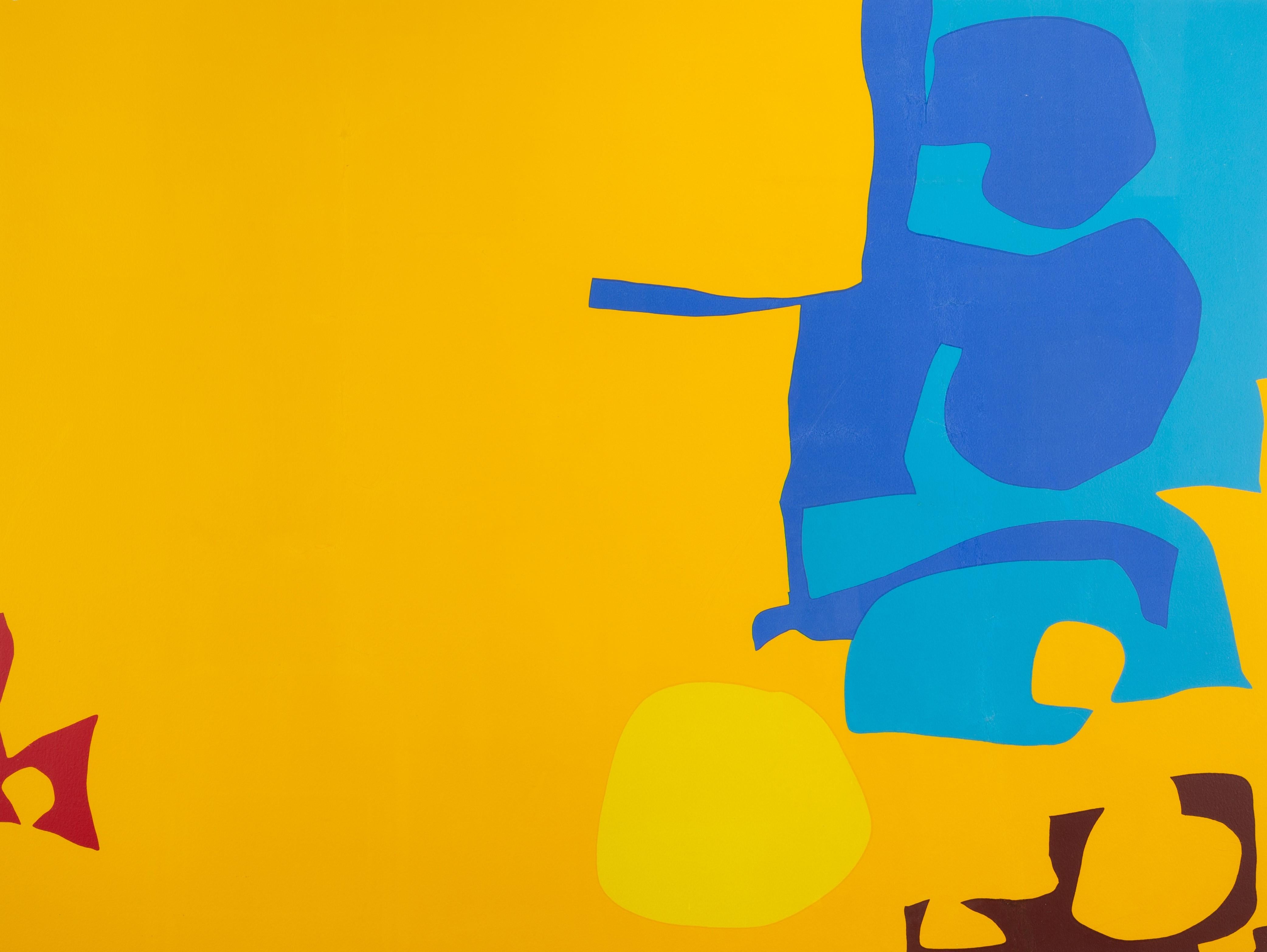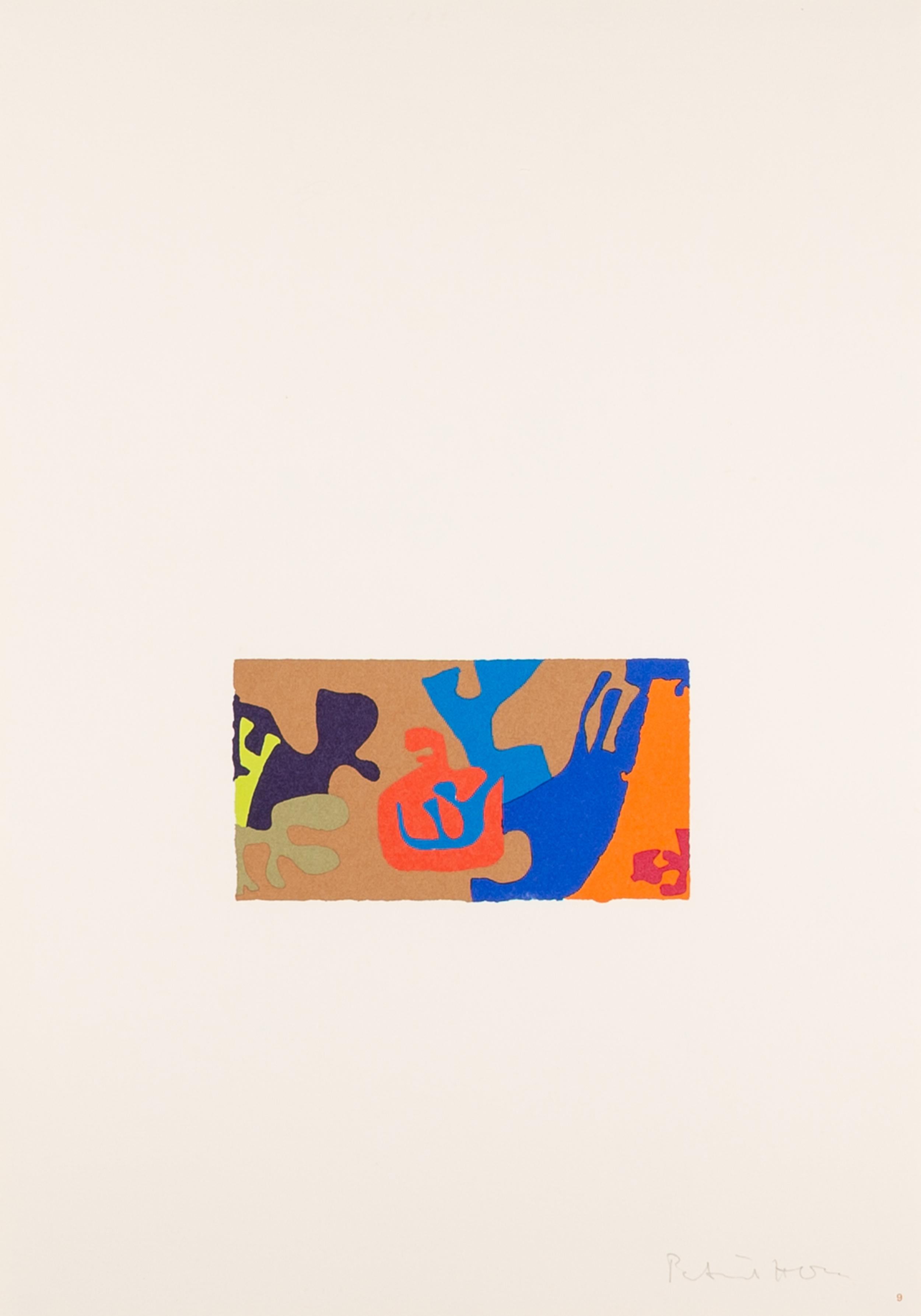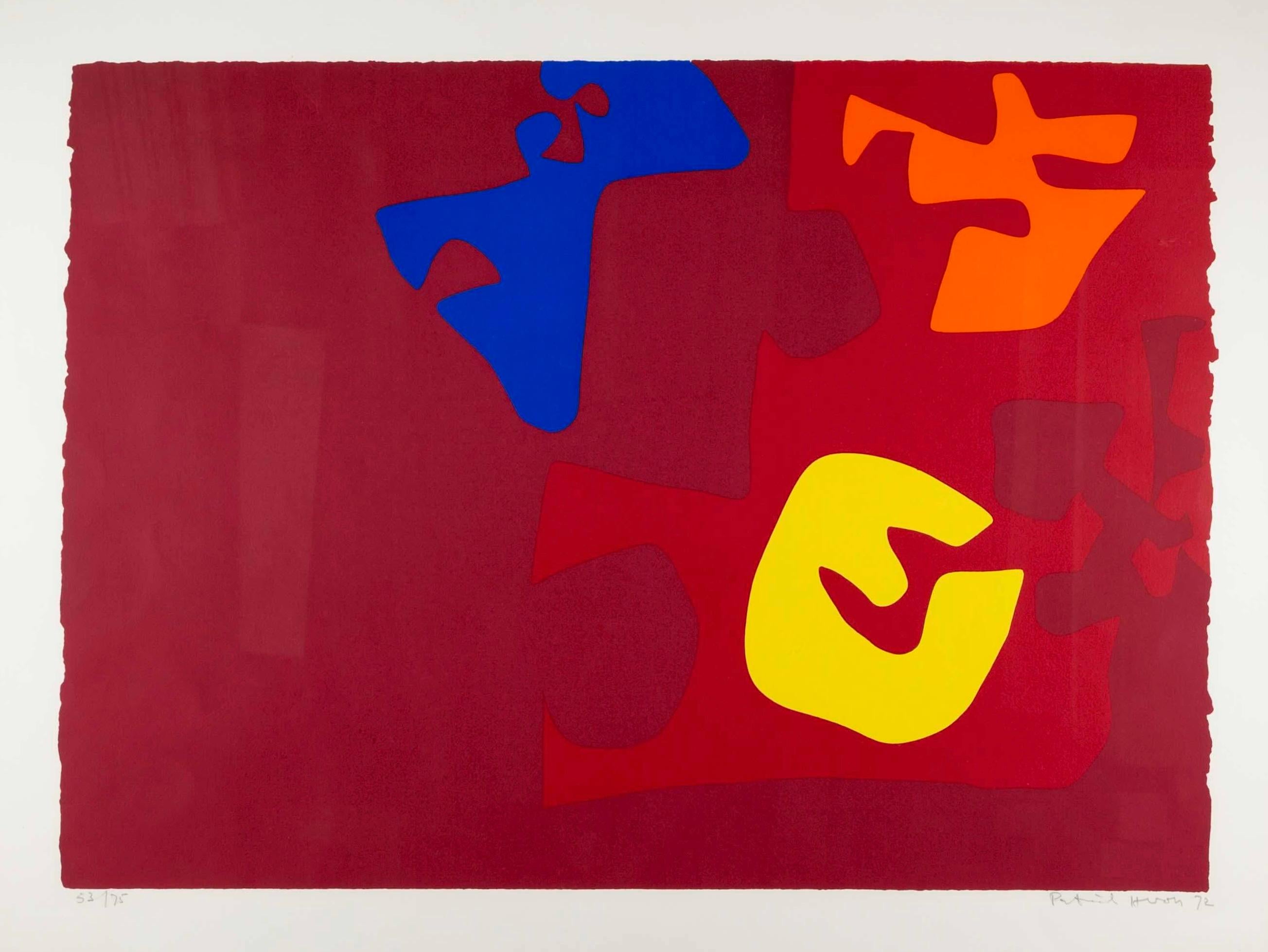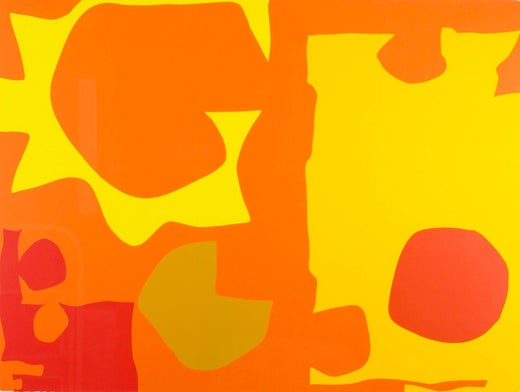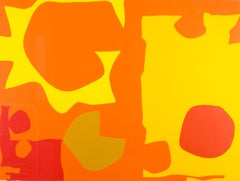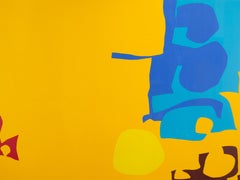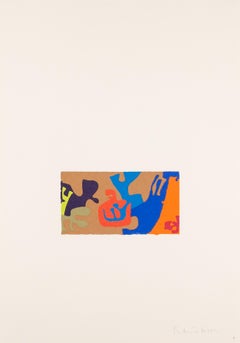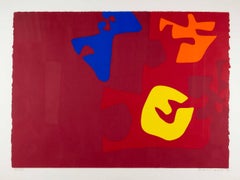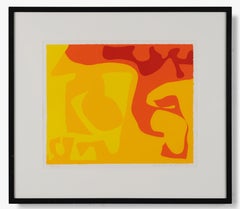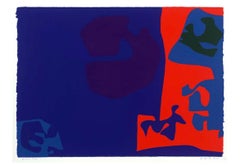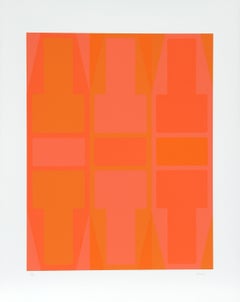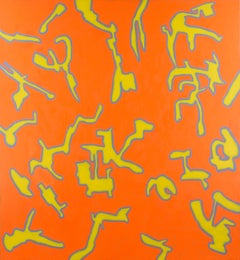Items Similar to Six in Light Orange with Red in Yellow : April by Patrick Heron, 1970
Want more images or videos?
Request additional images or videos from the seller
1 of 6
Patrick HeronSix in Light Orange with Red in Yellow : April by Patrick Heron, 19701970
1970
Price Upon Request
Price Upon Request
Price Upon Request
Price Upon Request
Price Upon Request
Price Upon Request
Price Upon Request
Price Upon Request
Price Upon Request
Price Upon Request
About the Item
Six in Light Orange with Red in Yellow : April by Patrick Heron, 1970
Additional information:
Medium: screenprint
71 x 101 cm
28 x 39 3/4 in
signed, dated and numbered in pencil
Patrick Heron was a painter, textile designer and writer on art.
He was born in January 1920 in Leeds, the son of T.M. Heron, founder of Cresta Silks and a Christian sociologist. From 1925 to 1930, Heron lived in St Ives. He studied at the Slade School from 1937 to 1939. The Second World War interrupted his painting, but in 1945 he settled in London and began to paint again. The Braque exhibition at the Tate Gallery deeply impressed him in 1946, and Heron had his first one-man exhibitions in 1947 at the London Redfern Gallery and in 1960 at the New York Bertha Schaefer Gallery. He became an art critic to the New Statesman and Nation in 1947, and the London correspondent to Arts (New York) in 1955. A retrospective exhibition was put on displaying Heron's work at the Wakefield Art Gallery in 1952, and he went on a northern tour that same year. Twelve paintings of his were held in the São Paulo Bienal from 1953 to 1954. Heron turned to abstract art under the influence of American abstract painting in 1956, and he moved to Zennor, Cornwall, in the same year. At the end of the 1950s, he was awarded First Prize in the John Moores Liverpool Exhibition. Heron was also a successful writer and was the author of The Changing Forms of Art (1955), Ivon Hitchens (1955) and Braque (1956).
Heron's work is part of numerous public and private collections, including Deutsche Bank, the Courtauld and the Yale Center for British Art..
- Creator:Patrick Heron (1920-1999, British)
- Creation Year:1970
- Dimensions:Height: 28 in (71.12 cm)Width: 39.75 in (100.97 cm)
- Medium:
- Period:
- Condition:
- Gallery Location:Kingsclere, GB
- Reference Number:1stDibs: LU2718214578032
Patrick Heron
Patrick Heron was a painter, textile designer and writer on art. He was born in January 1920 in Leeds, the son of T.M. Heron, founder of Cresta Silks and a Christian sociologist. From 1925 to 1930, Heron lived in St Ives. He studied at the Slade School from 1937 to 1939. The Second World War interrupted his painting, but in 1945 he settled in London and began to paint again. The Braque exhibition at the Tate Gallery deeply impressed him in 1946, and Heron had his first one-man exhibitions in 1947 at the London Redfern Gallery and in 1960 at the New York Bertha Schaefer Gallery. He became an art critic to the New Statesman and Nation in 1947, and the London correspondent to Arts (New York) in 1955. A retrospective exhibition was put on displaying Heron's work at the Wakefield Art Gallery in 1952, and he went on a northern tour that same year. Twelve paintings of his were held in the São Paulo Bienal from 1953 to 1954. Heron turned to abstract art under the influence of American abstract painting in 1956, and he moved to Zennor, Cornwall, in the same year. At the end of the 1950s, he was awarded First Prize in the John Moores Liverpool Exhibition. Heron was also a successful writer and was the author of The Changing Forms of Art (1955), Ivon Hitchens (1955) and Braque (1956). Heron's work is part of numerous public and private collections, including Deutsche Bank, the Courtauld and the Yale Center for British Art..
About the Seller
No Reviews Yet
Vetted Professional Seller
Every seller passes strict standards for authenticity and reliability
Established in 2010
1stDibs seller since 2024
43 sales on 1stDibs
Typical response time: 9 hours
- ShippingRetrieving quote...Shipping from: Kingsclere, United Kingdom
- Return Policy
More From This Seller
View AllSix in Light Orange with Red in Yellow: April 1970 - Patrick Heron, Print 1970
By Patrick Heron
Located in Kingsclere, GB
Patrick Heron was a painter, textile designer and writer on art.
He was born in January 1920 in Leeds, the son of T.M. Heron, founder of Cresta Silks and a Christian sociologist. ...
Category
1970s Abstract Prints
Materials
Screen
Blues Dovetailed in Yellow, 1970 - Bright Colourful Abstract Screenprint
By Patrick Heron
Located in Kingsclere, GB
Patrick Heron was a painter, textile designer and writer on art.
He was born in January 1920 in Leeds, the son of T.M. Heron, founder of Cresta Silks and a Christian sociologist. Fr...
Category
1970s Abstract Prints
Materials
Screen
Shapes of Colour 9 - Patrick Heron Abstract 1978 Screenprint with Blue + Orange
By Patrick Heron
Located in Kingsclere, GB
Patrick Heron 1920-1999
Shapes of Colour 9, 1978
screenprint
50 x 35 cm
19 3/4 x 13 3/4 in
signed in pencil
printed by Kelpra Studio, published by Kelpra Editions and Waddington & T...
Category
20th Century Abstract Prints
Materials
Screen
Untitled, from Rothko Memorial Portfolio - Patrick Heron Abstract Screenprint
By Patrick Heron
Located in Kingsclere, GB
Patrick Heron 1920-1999
Untitled, from Rothko Memorial Portfolio, 1972
screenprint
68.8 x 91.2 cm
27 1/8 x 35 7/8 in
signed and numbered in pencil, edition of 75
Published in 1973 b...
Category
1970s Abstract Prints
Materials
Screen
January 1973 : 19 (DRU Christmas Card), 1976 - Abstract Colourful Screenprint
By Patrick Heron
Located in Kingsclere, GB
This screenprint was commissioned by the Design Research Unit as their Christmas card for 1976. It is a reinterpretation of Patrick Heron’s 1973 screenprint 'JANUARY 1973 : 19'.
Pat...
Category
Late 20th Century Abstract Prints
Materials
Screen
Shapes of Colour 3 - 1978 Patrick Heron Print, Brown, Green + Yellow
By Patrick Heron
Located in Kingsclere, GB
Patrick Heron 1920-1999
Shapes of Colour 3, 1978
screenprint
50 x 35 cm
19 3/4 x 13 3/4 in
signed in pencil
Patrick Heron was a painter, textile designer and writer on art.
He w...
Category
20th Century Interior Prints
Materials
Screen
You May Also Like
Patrick Heron - Small Yellow, January
By Patrick Heron
Located in London, GB
Patrick Heron
Small Yellow: January, 1973
Screenprint
Hand-signed, titled and numbered by the artist
42.4 x 52.2 cm - Sheet
69.8 x 79.4 x 2.5 cm - Framed
Edition 42 of 72
condition:...
Category
1970s Modern Abstract Prints
Materials
Screen
January 1973, Plate 17
By Patrick Heron
Located in Bournemouth, Dorset
Patrick Heron
January 1973, Plate 17,
1973
Screen print, Artist’s Proof
Image: 68.0 x 93.2 cm
Frame: 88.0 x 111.0 cm
Signed and dated
Patrick Heron (30 January 1920 – 20 March 199...
Category
1970s Abstract Prints
Materials
Screen
$5,983 Sale Price
20% Off
T Series (Orange), Geometric Abstract Screenprint by Arthur Boden
By Arthur Boden
Located in Long Island City, NY
Artist: Arthur Boden, American
Title: T Series (Orange)
Year: circa 1970
Medium: Screenprint, signed and numbered in pencil
Edition: 100
Size: 29 in. x 23...
Category
1970s Abstract Geometric Abstract Prints
Materials
Screen
"Biomorph" Large Scale Orange Abstract
By Michael Pauker
Located in Soquel, CA
Large-scale abstract in orange of bold shapes by Bay Area artist Michael Pauker (American, b.1957). Unsigned, but was acquired with a collection of his work. Unframed. Image size: 60...
Category
21st Century and Contemporary Abstract Expressionist Abstract Paintings
Materials
Canvas, Oil
$3,600 Sale Price
20% Off
Orange Sun with 4 Rocks - minimalist, contemporary, abstract, acrylic on canvas
By Aron Hill
Located in Bloomfield, ON
This minimalist colourful painting is the landscape reimagined and features the image of a sun.
Aron Hill’s work is defined by a fresh, modern colour palette and simple, bold form—t...
Category
2010s Abstract Abstract Paintings
Materials
Canvas, Ink, Acrylic
Orange Clouds, Modern Screenprint by Shirai Akiko
Located in Long Island City, NY
Shirai Akiko, Japanese (1935 - 2001) - Orange Clouds, Year: 1969, Medium: Screenprint, signed, numbered, titled and dated in pencil, Edition: EA, Image Size: 11.75 x 16.75 inches...
Category
1960s Modern Abstract Prints
Materials
Screen
More Ways To Browse
Red In
Jasper Johns Flag
Jewish Pop Art
Joan Miro Barcelona Lithograph
Joan Miro Large
Joan Miro Limited Edition
Joan Mitchell Lithograph
Kenneth Noland Lithograph
Manoela Madera
Matisse Pochoir
Matsutani Takesada
Miro Sobreteixims
Mr Doodle
Noemi Gerstein
Peter Max Flower Abstract
Pia Stern
Print Signed Whitney
Putman Art
